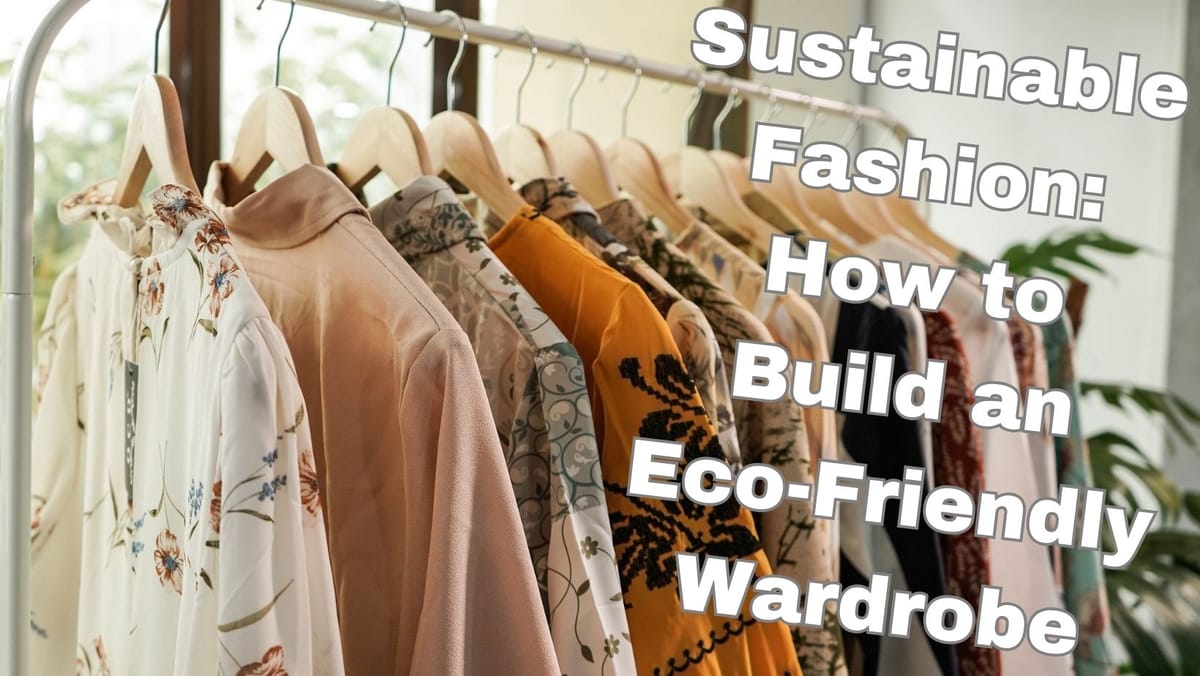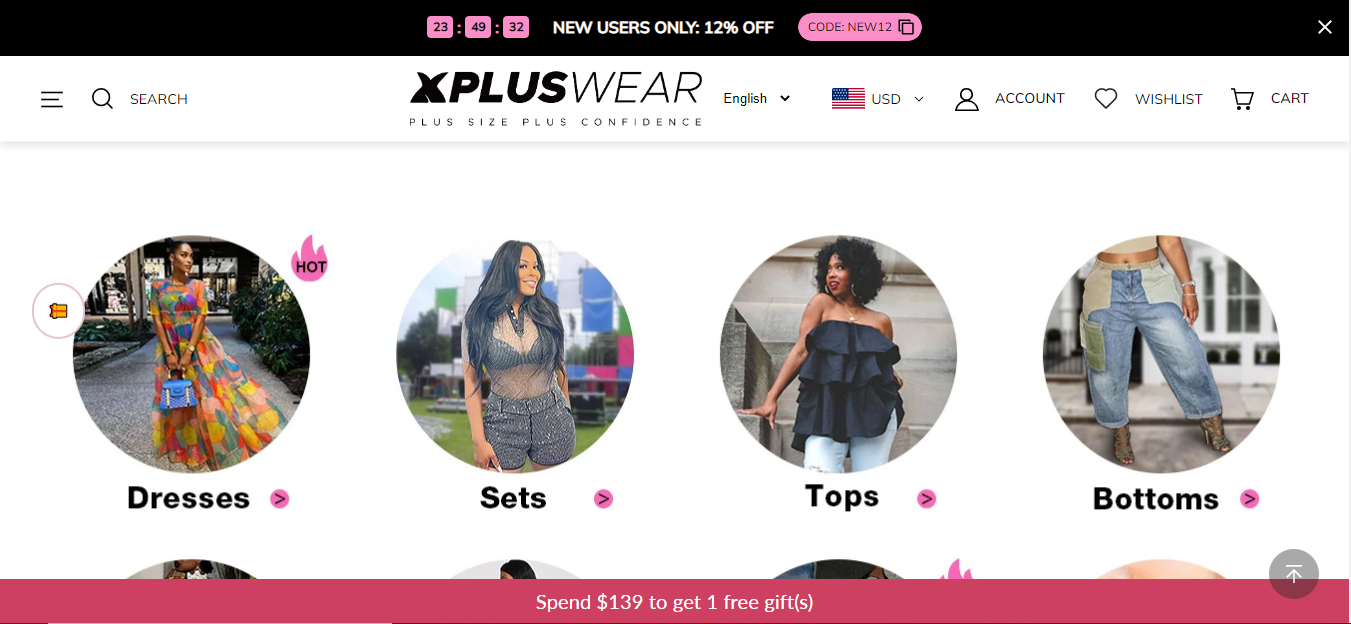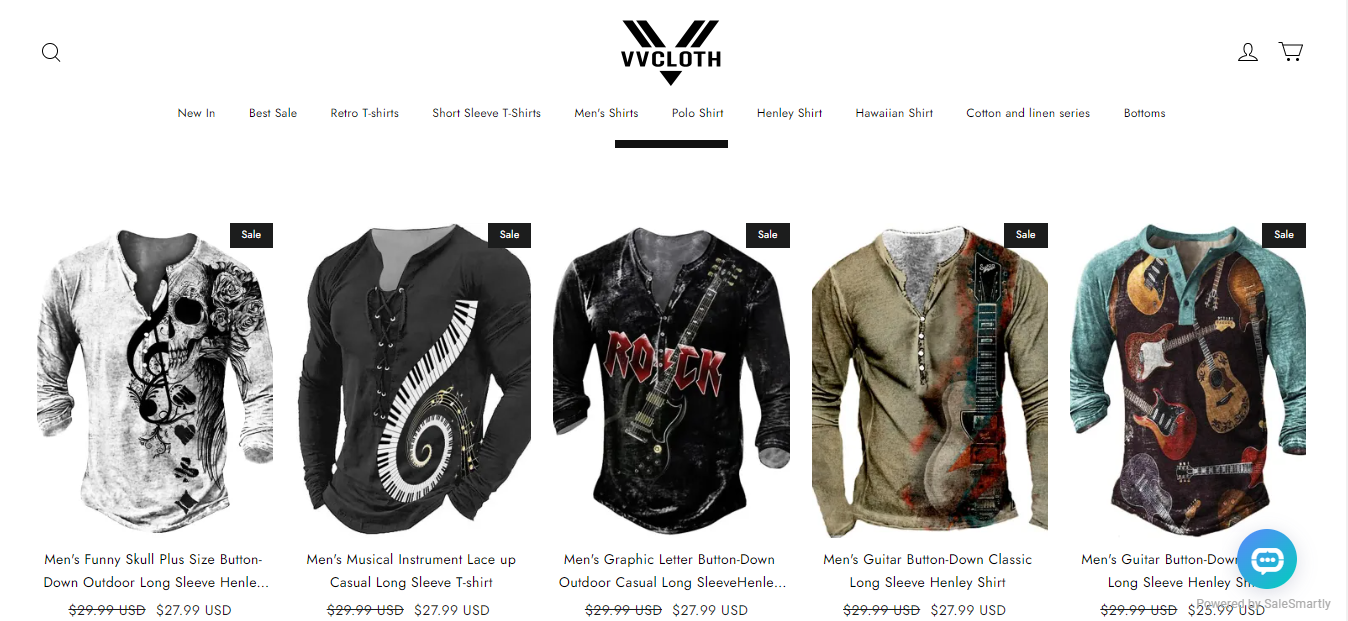Sustainable Fashion: How to Build an Eco-Friendly Wardrobe
Sustainable fashion promotes environmentally-friendly practices by focusing on materials, production, and consumption that minimize environmental harm. Building an eco-friendly wardrobe involves choosing clothing made from organic or recycled fabrics, and supporting ethical brands.

The fashion industry is often seen as glamorous and cutting-edge, but it also has a less glamorous side: a significant environmental footprint. From massive water consumption to the use of harmful chemicals and textile waste, fast fashion has long been a significant contributor to pollution. However, a shift toward sustainable fashion is underway, with a growing number of people and brands advocating for eco-conscious wardrobe choices. Building an eco-friendly wardrobe not only helps reduce your personal impact on the environment but also promotes ethical labour practices and a more mindful approach to consumerism.
This comprehensive guide will walk you through the key steps to building a sustainable wardrobe that’s fashionable, eco-friendly, and in tune with the growing trend of ethical fashion.
What is Sustainable Fashion?
Sustainable fashion refers to clothing, accessories, and footwear that are designed, produced, and distributed in ways that minimize environmental impact and promote ethical labor practices. It prioritizes eco-friendly materials, fair wages, and reducing waste through circular fashion models like thrifting, upcycling, and recycling. The goal is to create a more eco-friendly wardrobe that stands the test of time, both in terms of style and sustainability.
The Environmental Impact of Fast Fashion
Fast fashion is characterized by cheaply made clothing that is quickly cycled out of stores to keep up with trends. The consequences of this industry are alarming:
- Water Consumption: It takes about 2,700 litres of water to produce just one cotton T-shirt, enough for one person to drink for over two years.
- Waste: Approximately 85% of textiles are thrown away each year, ending up in landfills where they contribute to pollution.
- Greenhouse Gases: The fashion industry is responsible for 10% of global carbon emissions, more than all international flights and maritime shipping combined.
Given this impact, moving towards sustainable fashion is critical for reducing environmental harm.

How to Build an Eco-Friendly Wardrobe
Now that we understand the importance of sustainable fashion, let’s explore practical ways to build an eco-friendly wardrobe. These steps can help you make more conscious fashion choices that reduce waste and promote sustainability.
1. Conduct a Wardrobe Audit
Before you buy anything new, audit your existing wardrobe. Take stock of what you already own, identify key pieces you wear regularly, and separate items you no longer use. The goal is to understand your current wardrobe, prevent over-purchasing, and find ways to extend the life of what you already have.
- Tip: Organize your wardrobe into three categories: keep, donate, and repair. This will help you see where you can reduce waste by making thoughtful decisions about your clothes.
2. Buy Less, Choose Wisely
Fast fashion encourages overconsumption, so a key principle of sustainable fashion is to buy less and choose timeless pieces that will last. Instead of purchasing trendy items that may go out of style, focus on classic, versatile pieces that work for multiple seasons and occasions.
- Timeless Pieces: Invest in items like a well-fitted blazer, classic jeans, or a little black dress—pieces that never go out of style.
- Neutral Colors: Choose clothing in neutral shades like black, beige, or navy that can be easily mixed and matched with other items in your wardrobe.
By buying high-quality, versatile clothing, you reduce the need for frequent purchases, which minimizes waste.
3. Prioritize Sustainable Fabrics
Choosing the right materials is crucial when building a sustainable wardrobe. Many common fabrics like polyester and nylon are derived from fossil fuels and contribute to microplastic pollution. Opt for organic, biodegradable, and eco-friendly fabrics instead.
- Organic Cotton: Grown without harmful pesticides, organic cotton is a more sustainable alternative to conventional cotton.
- Hemp: Hemp is durable, requires less water, and grows quickly without the need for pesticides.
- Tencel: Made from sustainably sourced wood pulp, Tencel is a soft, breathable, and biodegradable fabric.
- Linen: Linen is made from the flax plant and is naturally biodegradable. It's known for its durability and lightweight feel.
When shopping for new pieces, always check the label to ensure you’re choosing fabrics that are kind to the planet.

4. Shop Second-Hand or Vintage
Thrifting is one of the best ways to reduce the demand for new clothing and keep textiles out of landfills. Shopping at thrift stores or buying vintage clothing supports a circular fashion model where garments are reused rather than discarded.
- Benefits of Second-Hand Shopping:
- Reduces waste by giving clothes a second life.
- Often more affordable than buying new.
- Helps you find unique, one-of-a-kind pieces that aren’t available in mainstream stores.
Popular second-hand marketplaces include apps like Depop, Poshmark, and local thrift stores, where you can find everything from designer pieces to everyday basics.
5. Invest in a Capsule Wardrobe
A capsule wardrobe is a collection of essential clothing items that can be mixed and matched to create a variety of outfits. The idea is to simplify your wardrobe by focusing on quality over quantity, reducing the need for excessive clothing.
- How to Build a Capsule Wardrobe:
- Start with versatile basics like jeans, t-shirts, and jackets.
- Choose neutral colours and timeless silhouettes.
- Select items that can transition between seasons and be styled in multiple ways.
By focusing on a limited number of high-quality pieces, you reduce the need for frequent shopping and minimize waste.
6. Support Ethical and Sustainable Brands
When you do need to purchase new clothing, research brands to ensure they align with your values. Ethical brands prioritize fair labour practices, eco-friendly materials, and transparent supply chains.
- Brands to Watch:
- Patagonia: Known for its commitment to environmental sustainability and ethical manufacturing.
- Everlane: Focuses on transparent pricing and sustainable production methods.
- Reformation: It specializes in eco-friendly fabrics and reduces carbon emissions in its supply chain.
- People Tree: A pioneer in fair trade fashion, producing garments in a sustainable and ethical manner.
Before buying, research the brand’s practices on labor, materials, and environmental impact to make informed decisions.
7. Care for Your Clothes
Caring for your clothes properly can extend their lifespan and reduce the need for replacements. Follow care labels to avoid damaging fabrics, and consider line drying instead of using a dryer to conserve energy and reduce wear and tear on your garments.
- Washing Tips:
- Wash clothes in cold water to reduce energy consumption.
- Use eco-friendly detergents to minimize environmental impact.
- Repair damaged clothing instead of throwing it away. Simple fixes like sewing a button or patching a hole can extend the life of your favourite pieces.

Forward-Looking Strategies in Sustainable Fashion
The fashion landscape is continually evolving, and several exciting innovations and trends are making it easier for consumers to adopt sustainable practices.
1. Upcycling and DIY Fashion
Upcycling involves transforming old or discarded clothing into something new and stylish. It’s a creative way to reduce waste and personalize your wardrobe.
- DIY Ideas:
- Turn old t-shirts into tote bags or headbands.
- Add patches or embroidery to give new life to worn-out jeans.
- Repurpose oversized clothes into trendy, fitted garments.
Brands like Rags2Riches and Craftcha offer ready-made upcycled clothing, but you can also get creative and start DIY projects at home.
2. Fashion Rental Services
For special occasions, instead of buying a new outfit, consider renting clothes. Fashion rental services like Rent the Runway and HURR offer a wide selection of designer clothing that you can rent for a fraction of the price. This reduces waste and prevents the purchase of single-use garments.
3. Digital Fashion
As technology advances, digital fashion is emerging as a way to reduce waste in the fashion industry. Digital clothing, worn virtually through augmented reality (AR), allows fashion enthusiasts to experiment with new looks without producing physical garments. While still in its infancy, this trend could revolutionize sustainable fashion in the future.
FAQs
What is sustainable fashion?
Sustainable fashion refers to clothing that is designed, manufactured, and distributed with minimal environmental impact. It focuses on ethical production practices, eco-friendly materials, and reducing waste.
What fabrics are considered sustainable?
Common sustainable fabrics include organic cotton, hemp, linen, and Tencel. These materials are biodegradable, use fewer resources, and are made without harmful chemicals.
How do I start a sustainable wardrobe?
Start by auditing your current wardrobe, buying less, and prioritizing timeless, high-quality pieces. Shop second-hand when possible, and research sustainable brands for new purchases.
Why is fast fashion bad for the environment?
Fast fashion is harmful because it promotes overconsumption and waste. It uses large amounts of water and energy, generates excessive waste, and often relies on unethical labor practices.
Can sustainable fashion be affordable?
Yes! Thrifting, upcycling, and buying fewer but higher-quality items are all budget-friendly ways to embrace sustainable fashion. Many sustainable brands also offer affordable options.




